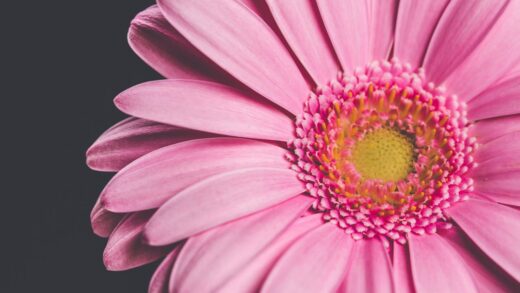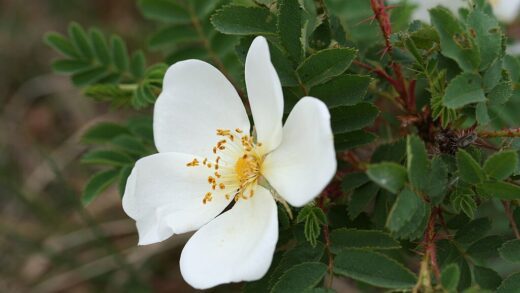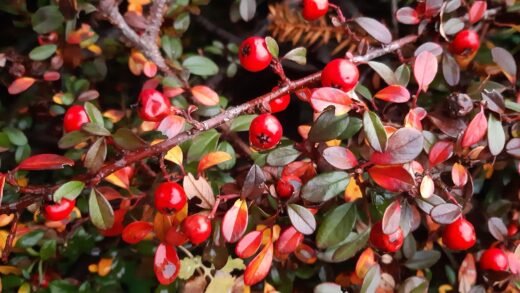Light is the fundamental source of energy for nearly all plants, and for a sun-loving tropical species like Brugmansia, providing the correct amount and intensity of light is paramount for its health, vigour, and flowering prowess. The angel’s trumpet transforms sunlight into the energy required to fuel its impressively rapid growth and to produce its magnificent, fragrant blooms. An imbalance in its light exposure—either too little or too much—can lead to a range of problems, from a lack of flowers and weak, leggy growth to scorched leaves and heat stress. Understanding and catering to the specific light requirements of this plant is a foundational element of its successful cultivation, directly influencing its overall performance and the spectacular nature of its display.
The role of sunlight in plant health
Sunlight is the engine that drives photosynthesis, the vital process by which plants convert light energy, water, and carbon dioxide into glucose, their primary source of food. For a plant with the metabolic rate and growth capacity of a Brugmansia, a substantial amount of sunlight is required to generate the energy needed to sustain its functions. This energy is used not only for basic survival but also for the production of new leaves, stems, and, most importantly, the large, energy-intensive flowers that are the plant’s main attraction.
The quality and duration of light have a direct impact on the physical characteristics of the plant. With adequate sunlight, a Brugmansia will develop strong, sturdy stems and lush, dark green foliage. The leaves will be well-formed and held confidently, efficiently capturing the sun’s rays. This robust vegetative framework is essential as it forms the foundation that will support the heavy flower load later in the season. Insufficient light, conversely, will result in a plant that is visibly weaker and less prepared for the demands of flowering.
Flower production is particularly sensitive to light conditions. The initiation of flower buds is an energy-intensive process that is often triggered by a combination of factors, including day length and light intensity. A Brugmansia that receives plenty of direct sunlight is far more likely to produce an abundance of buds and a spectacular floral display. Light is the critical signal that tells the plant it has sufficient energy reserves to invest in reproduction, which is the biological purpose of flowering.
Furthermore, adequate sunlight plays a role in the plant’s overall health and resilience. A plant that is photosynthesizing efficiently is a stronger plant, better able to withstand pressure from pests and diseases. Sunlight also helps to keep the foliage dry, reducing the likelihood of fungal diseases taking hold, which often thrive in damp, shady conditions. In essence, providing the right light is not just about encouraging flowers; it is about fostering a vigorous, healthy, and resilient plant from the ground up.
Ideal light exposure
For optimal performance, Brugmansia generally require at least six to eight hours of direct sunlight each day. This duration of direct light provides the necessary energy for vigorous growth and prolific blooming. In many temperate climates, a location in full sun, meaning it receives direct sunlight for the majority of the day, is perfectly suitable and will often yield the most impressive results. The plant will be compact, sturdy, and covered in flowers during its peak season.
However, the ideal light exposure can be nuanced and often depends on the specific climate. While Brugmansia are sun-lovers, they can be susceptible to stress from the intense, scorching heat of the afternoon sun, particularly in hotter, southern climates or arid regions. In these areas, the best location is one that provides full, direct sun during the morning hours, followed by partial or dappled shade during the hottest part of the afternoon, typically from mid-afternoon onwards. This protects the large, delicate leaves from burning and reduces the significant water stress the plant would otherwise experience.
The concept of “dappled shade” is important. This is not the deep shade found under a dense evergreen tree, but rather the filtered light that comes through the canopy of a high-branched deciduous tree. This type of light is bright enough to allow for photosynthesis but provides a respite from the most intense solar radiation. A location on the east side of a house, which receives morning sun and afternoon shade, is often an ideal compromise, balancing the need for energy with protection from heat stress.
Ultimately, the goal is to maximize the amount of usable light the plant receives without causing it to suffer from excessive heat. Observing the plant is key. If a Brugmansia in full sun is constantly wilting, even with adequate water, or its leaves are developing scorched, brown patches, it is a clear sign that the afternoon sun is too intense. In such cases, relocating the plant to a spot with some afternoon protection or providing artificial shade with a screen or umbrella can make a significant difference to its health and happiness.
Symptoms of inadequate light
A Brugmansia that is not receiving enough light will exhibit several clear and distinct symptoms. One of the most common and obvious signs is etiolation, or what is often referred to as “leggy” growth. The plant will stretch towards the available light source, resulting in stems that are unusually long and thin, with large gaps between the leaves. This growth is weak, floppy, and structurally unsound, making the plant more susceptible to damage from wind or the weight of its own flowers, should it produce any.
The foliage of a light-deprived Brugmansia will also look unhealthy. The leaves may be smaller than average and will often be a pale or yellowish-green colour, rather than the rich, deep green of a healthy plant. This is a direct result of the plant producing less chlorophyll, the pigment that captures light energy. The overall appearance will be sparse and thin, lacking the dense, lush canopy that is characteristic of a well-grown specimen.
The most disappointing symptom of inadequate light for most gardeners is a failure to bloom. A Brugmansia may grow to a reasonable size and produce plenty of leaves in a shady location, but it will likely produce very few, if any, flowers. The plant simply does not have the energy reserves required for the demanding process of bud formation and flowering. If a mature plant that is otherwise healthy is not blooming, insufficient sunlight is one of the most likely culprits and the first factor that should be assessed and corrected.
In low-light conditions, a Brugmansia also becomes more susceptible to certain problems. The soil in a shady spot will dry out much more slowly, increasing the risk of overwatering and root rot. The lack of direct sun and reduced air circulation can also create a more humid microclimate around the plant, making it a more inviting target for fungal diseases like powdery mildew and for pests such as slugs and snails.
Adjusting light for containers and seasons
Managing light requirements for Brugmansia grown in containers offers a significant advantage: mobility. A potted plant can be moved throughout the day or the season to ensure it is always in the optimal location. In the spring and autumn, when the sun is less intense, the pot can be placed in a full sun position to maximize light absorption. As the heat of summer arrives, the same pot can be shifted to a location that provides some afternoon shade, protecting it from the most intense rays.
This mobility is also crucial when bringing plants indoors for the winter. If you plan to overwinter your Brugmansia as a houseplant, it must be placed in the sunniest window you have, which is typically a south-facing one in the northern hemisphere. Even in the brightest window, the light intensity indoors during winter is significantly lower than outdoors in summer. While the plant will survive, you should not expect vigorous growth or flowering. Using a grow light can supplement the natural light and help keep the plant healthier during the dark winter months.
When transitioning a plant from an indoor winter location back outdoors in the spring, it is vital to do so gradually. The leaves that grew indoors are not adapted to the intensity of direct outdoor sunlight and will scorch easily. This process, known as hardening off, involves placing the plant in a shady, protected spot outdoors for a few hours at first, and then incrementally increasing its exposure to direct sun over a period of one to two weeks. This allows the plant to build up its tolerance and avoid a sudden shock.
The changing angle of the sun throughout the seasons should also be considered for plants in the ground. A spot that is in full sun during the peak of summer may be in partial shade during the spring or autumn when the sun is lower in the sky. Observing the light patterns in your garden throughout the year can help you to choose the very best permanent location for your angel’s trumpet, ensuring it receives the light it needs to thrive through all stages of the growing season.

















